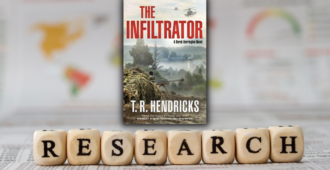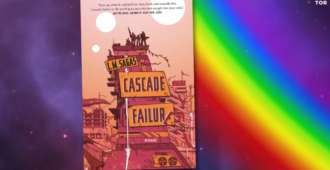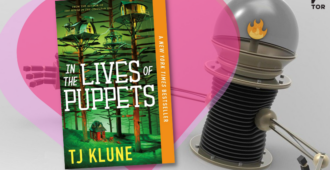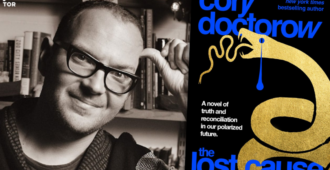Written by Sharon Lynn Fisher
I never expected to be writing about bugs. If someone had proposed the idea to me, I would have said bugs and romance? Ick factor = terminal. And yet here I am less than a month away from the release of The Ophelia Prophecy, my post-apocalyptic biopunk romance about a race of human/insect transgenic organisms.
It all started one morning a few years back when I woke with the final images of a dream bleeding over into consciousness: Two praying mantises squaring off in a formal fighting stance, threatening each other with wooden staffs. I don’t know what it was about that dream—it was incredibly compelling. I can still remember the knocking sound their staffs made, punctuating this graceful, martial-arts-like dance.
From that dream sprang the idea for the Manti—a genetically modified race born of biohacker experiments run amok. Although most of the Manti are mantis-based, the term is actually shorthand used by non-genetically modified humans for any insect-human hybrid.
When I decided my story was going to be about a Manti prince falling in love with his enemy—a human archivist with a secret ticking away inside her like a time bomb—I asked my critique partner if she thought I was crazy. Would I really be able to pull off a story like this? Could bug people be sympathetic, let alone sexy? Almost two years later, I still crack up over her reply: “Stay away from low-rent bugs.”
And obviously spiders. I could never write a book about spiders. (Famous last words.)
So Augustus Paxton (“Pax”) was born, son of the Manti amir, who led his race to victory over the human creators who spurned them. Most of what is Manti about Pax is on the inside, with the exception of a set of scars where a superfluous pair of arms was removed, repeatedly, in his childhood. But his sister, Iris, is a winged queen of nightmares, with preternaturally large eyes and arms that double as deadly weapons. There’s a scene where she confronts a wolf/human transgenic holy man (later turned potential lover) that’s a sort of tribute to the dream that inspired the book.
Distasteful as these creations became to humanity, they were always beautiful to me. I imagined them as a sort of futuristic fae—dark, mysterious, and warlike. Deeply conflicted about their nature. Alternately revering and reviling humanity. Reveling in beauty and sensual pleasure.
I found fantastical but real-world examples to inspire my characters. Pseudocreobotra wahlbergi, the spiny flower mantis, which was the model for my villain, Priestess Cleo—beautiful and deadly. And Dalara garuda, a 2.5-inch solid black “warrior wasp” that can both sting and bite—if the military was going to genetically engineer insect-based fighters, this guy would definitely make the top three species of interest. And of course Scarabaeidae, the scarab beetle, which served as inspiration for Pax’s ship Banshee, a blend of plant and insect DNA and artificial intelligence. Banshee is the first of the Manti to be kind to the human heroine, Asha, and also one of my favorite characters in the story.
The Manti, engineered by scientists applying artistry to their experiments, learn from their creators. Their capital, the ancient city of Granada, has been transformed into a living, breathing, organically evolving work of art. A riot of color and texture, with Gaudi-influenced architecture brought to life by biotechnology.
A fitting home for the creatures that wander its streets. And not a low-rent bug in sight.
…………………………
From the Tor/Forge April 7th newsletter. Sign up to receive our newsletter via email.
…………………………
More from the April 7th Tor/Forge newsletter:








Loved. Your. Book! Is there going to be a second book on the mantis?
I’m so glad you enjoyed it, Nancy! Yes, I do plan to write another book, focusing on Iris this time.